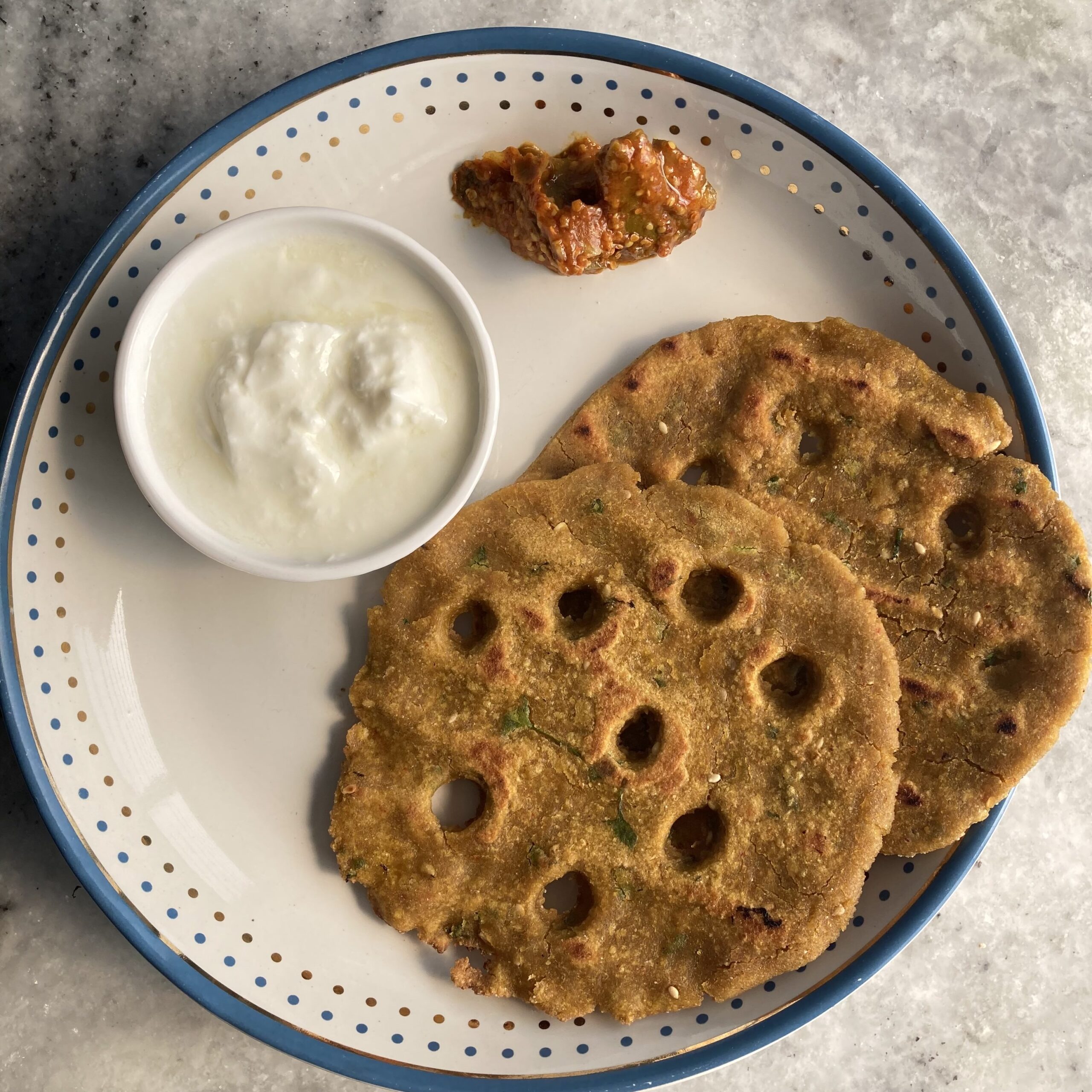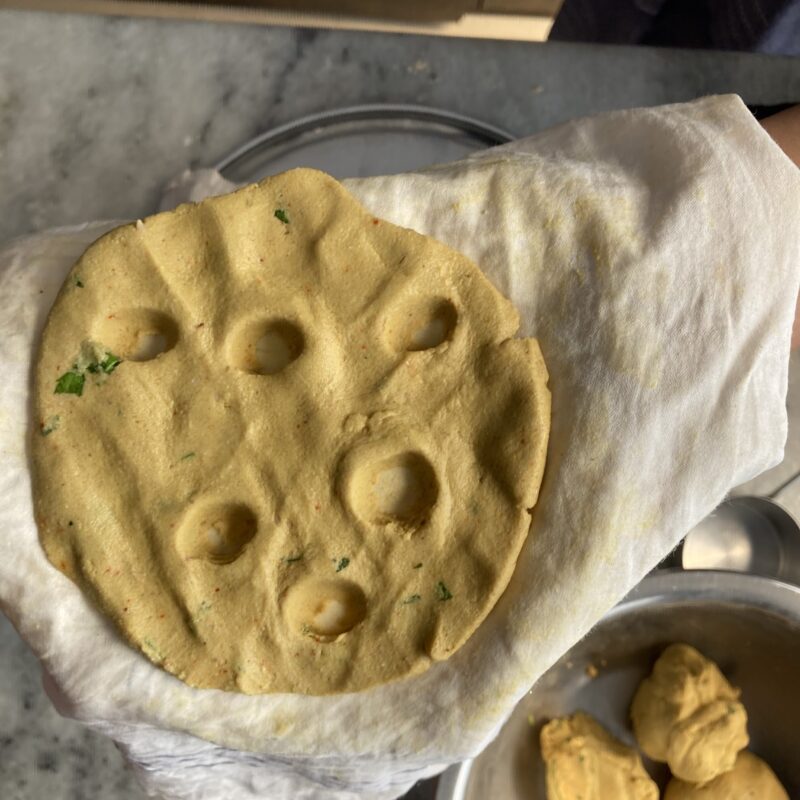
| Oil, for roasting | As required |
|---|---|
| Water, for kneading | ½ cup |
| Curd | 1 tablespoon |
| Salt | ½ teaspoon |
| Coriander (finely chopped) | 2 tablespoons |
| Sesame seeds | 1 tablespoon |
| Red chilli powder | ¼ teaspoon |
| Turmeric (haldi) | ¼ teaspoon |
| Green chili, finely chopped | 1 |
| Ginger paste | 1 teaspoon |
| Barnyard millet flour | 1 cup |
| Jowar (sorghum) flour | ½ cup |
What You Will Need
A non-stick pan, and a few sheets of butter paper, or a wet malmal cloth.
Instructions
In a large mixing bowl add the jowar and barnyard millet flour. Add in the ginger paste, green chilli, turmeric, sesame seeds, chopped coriander, salt, and curd. Mix well, making sure everything is combined well.

Add enough water to this mixture to be able to knead it into a smooth dough.

Now take a small ball of the dough and flatten it on the oiled butter paper or moist malmal cloth by patting it down with your hands. Create holes in the flattened dough with your fingers.

Gently drop the thalipeeth along with butter paper or malmal cloth on a hot greased pan, with the thalipeeth side facing down.

Once the pan is hot enough to hold the thalipeeth from the bottom, peel off the butter paper or wet malmal cloth gently, taking care to not break your thalipeeth.

Smear some oil over the thalipeeth and continue to cover and cook on both sides on medium flame.
Serve the thalipeeth with pickle or curd.
Tips and Variations
Covering and cooking the thalipeeth gives it a more moist texture.
Using a wet cloth instead of butter paper is the more traditional way of flattening the thalipeeth dough.
You can add finely chopped palak or grated carrots to the dough to increase its nutritive value.
Chef Ankita Jain has spent more than 15 years working as a chocolatier. While she enjoyed shaping the kitchen at Harsh Chocolates, her passion for healthier food led her to start Bicycle Kitchen. Over the past three years, she has experimented with millet-based recipes and perfected them.

This recipe is part of the Millet Revival Project 2023, The Locavore’s modest attempt to demystify cooking with millets, and learn the impact that it has on our ecology. This initiative, in association with Rainmatter Foundation, aims to facilitate the gradual incorporation of millets into our diets, as well as create a space for meaningful conversation and engagement so that we can tap into the resilience of millets while also rediscovering its taste.

Rainmatter Foundation is a non-profit organisation that supports organisations and projects for climate action, a healthier environment, and livelihoods associated with them. The foundation and The Locavore have co-created this Millet Revival Project for a millet-climate outreach campaign for urban consumers. To learn more about the foundation and the other organisations they support, click here.
You must be logged in to rate this recipe.

Sign in with email

